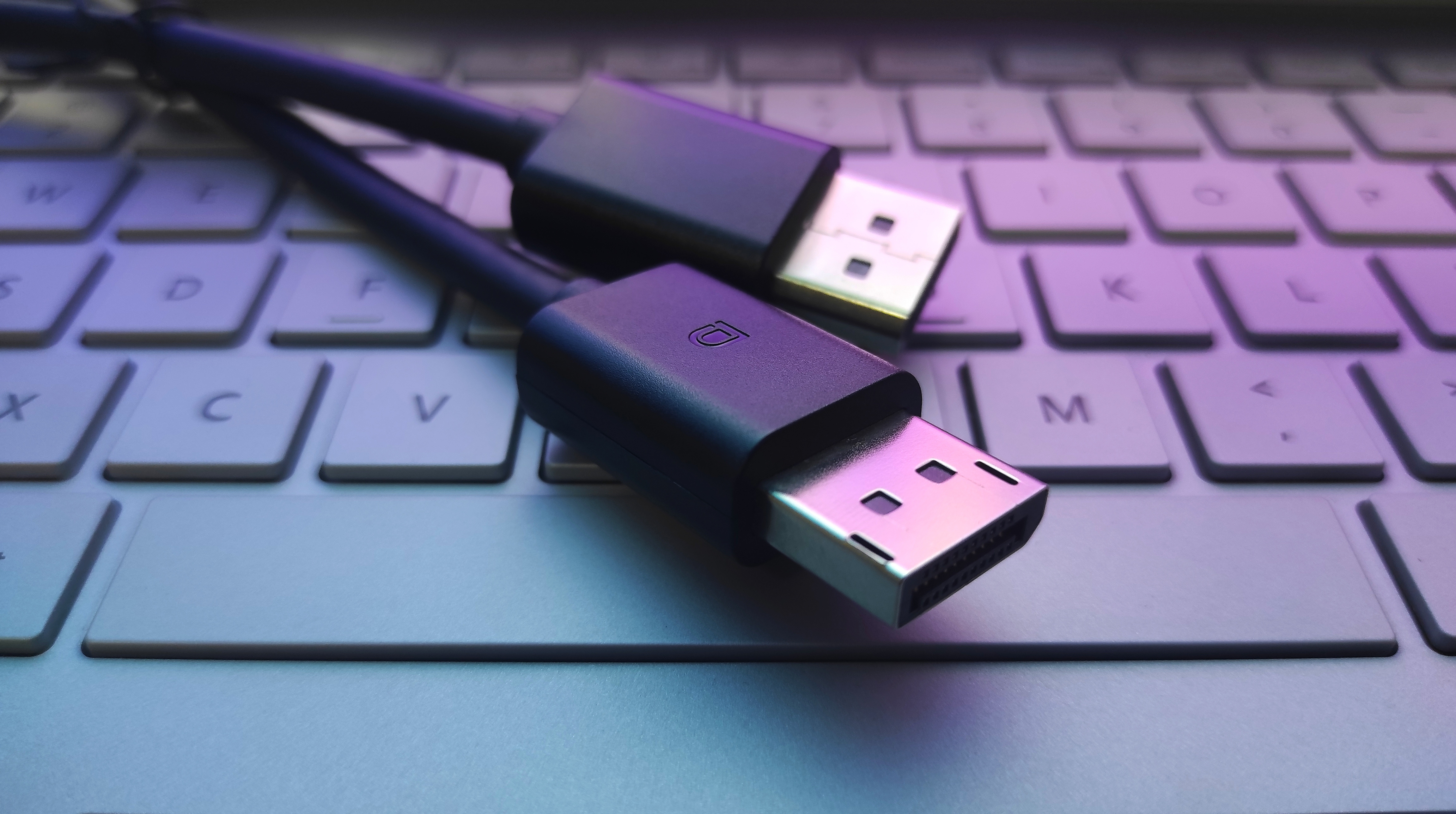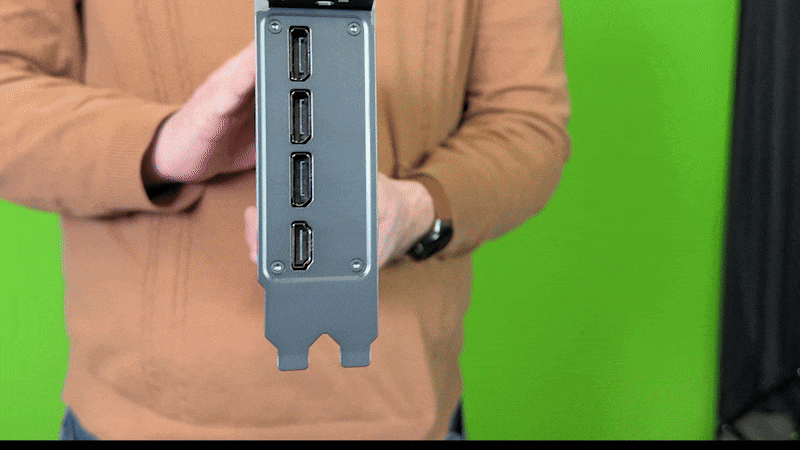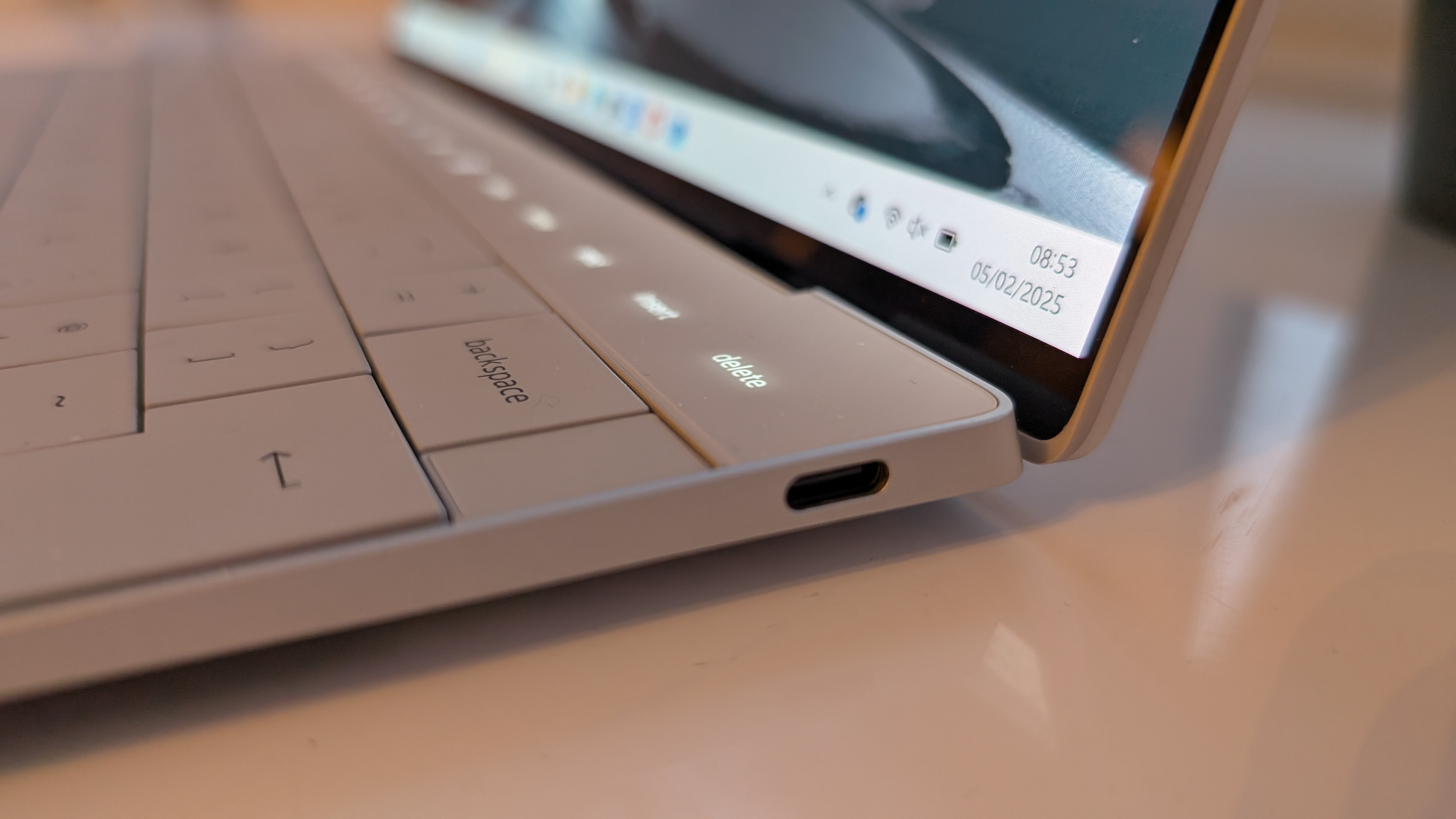Listen up, PC gamers: it’s time for DisplayPort cables to die, sorry not sorry
Please let me get rid of some cables, guys

Okay, I know I’ve probably upset a bunch of people with that headline. If you’ve made it this far and didn’t just click this article to copy the URL and immediately post it to Reddit with a scathing remark about the low IQ of tech journalists, thanks for giving me a chance. I’m serious, though: it’s long past time for my DisplayPort cables to receive an honorable discharge.
Let me give you some context: I’ve been a gamer for decades, and I’ve seen plenty of display connection standards come and go. I’ve played games over DVI, VGA, SCART, the works. I’ve still got a box in my cupboard with a dusty collection of cables that may or may not be supported by my current hardware selection. These days, I primarily play on PC, and that generally means that it’s DisplayPort or bust.
I want to be clear: I don’t hate DisplayPort. In fact, it’s a solid connection standard for gaming with a good physical connector - the simple button-controlled clasp is far less annoying than the twin thumbscrews found on VGA and DVI cables, and for a long time, DisplayPort was the de facto best option for PC gaming, offering superior resolution and refresh rate support compared to the more readily accessible HDMI. But with the dawn of HDMI 2.2 this year, that gap has finally closed, and I’m left wondering if we really need DisplayPort anymore.
Cables vs interfaces
I have to make one key point of order here. I’m not proposing that we do away with DisplayPort as a digital display interface, only that we kill off the physical pinout connector. For the uninitiated, this is an unclear but vital distinction; DisplayPort’s digital interface protocol is integrated with Thunderbolt cables to deliver audio and video data over a USB-C connection, and that’s totally fine. I’m very pro-USB-C (despite my misgivings about the new Mac Mini), and I’m very happy to see it appearing on more monitors as a connection option alongside more conventional ports like DP and HDMI.
HDMI and USB-C are already more widespread, and at this point, it feels like it's only GPU manufacturers who are doggedly clinging to DisplayPort - even though HDMI 2.2 can now handle high-end stuff like 16K resolutions and 96Gbps bandwidth (actually faster than DP 2.1’s 80Gbps). Every new GPU from Nvidia, AMD, and Intel invariably comes with three DP ports and a single HDMI these days - but why?

If you’ve read any of my previous work on TechRadar, you might have clocked that I’m a fierce decrier of e-waste and poor sustainability practices in tech. That hasn’t changed; I was over the moon to see Apple finally ditch Lightning connectors and unify under the glorious banner of USB-C. Industry bodies like the Video Electronics Standards Association (VESA) and the USB Implementers Forum (USB-IF) have been hard at work standardizing connection formats for years, and that’s an extremely good thing. It reduces e-waste, prevents closed tech ecosystems, and generally makes our lives easier.
A beautiful utopian future?
In fact, why don’t we go one step further, and get rid of HDMI too? I’ve been complaining for years about laptops ditching HDMI video output and USB-A in favor of a handful of USB-C ports and nothing else, but what if USB-C could actually do everything, without the need for a connection hub? What if a single cable could handle full connectivity, covering everything from audio and video to file transfers and power delivery?
Perhaps I’m getting ahead of myself, but the path to unification is taken in gradual steps. If HDMI 2.2 means that there’s no longer a meaningful difference between the performance capabilities of HDMI and DisplayPort, and Thunderbolt-enabled USB-C cables can handle the audio-video requirements of either interface, why shouldn’t we just get rid of the chaff and consolidate everything under a single physical connection standard? I could certainly stop whining about every new ultrabook only coming with USB-C ports then.

I’ve been building PCs for more than a decade now, and while I don’t think the internal processes of that are ever going to be simplified to this level, the external cable situation has so much room for improvement. I’m not going to share a photo of it because I’m embarrassed by how ugly it looks, but the custom desktop in my home office has a veritable mess of cables coming out the back of it, and I don’t even want to bring up my Box Of Cable Shame again (although I realize that I just did). Can we not make things simpler?
So here’s my proposal, GPU makers. You’re the ones really holding us back now. It’s time to let go of DisplayPort, make nice with the monitor brands taking steps to implement Thunderbolt connectivity in their products, and lead us forward into a glorious USB-C future. Nothing lasts forever; VGA and DVI had to go, and now it's DisplayPort's time. Make it so.
You might also like...
Get daily insight, inspiration and deals in your inbox
Sign up for breaking news, reviews, opinion, top tech deals, and more.

Christian is TechRadar’s UK-based Computing Editor. He came to us from Maximum PC magazine, where he fell in love with computer hardware and building PCs. He was a regular fixture amongst our freelance review team before making the jump to TechRadar, and can usually be found drooling over the latest high-end graphics card or gaming laptop before looking at his bank account balance and crying.
Christian is a keen campaigner for LGBTQ+ rights and the owner of a charming rescue dog named Lucy, having adopted her after he beat cancer in 2021. She keeps him fit and healthy through a combination of face-licking and long walks, and only occasionally barks at him to demand treats when he’s trying to work from home.
You must confirm your public display name before commenting
Please logout and then login again, you will then be prompted to enter your display name.